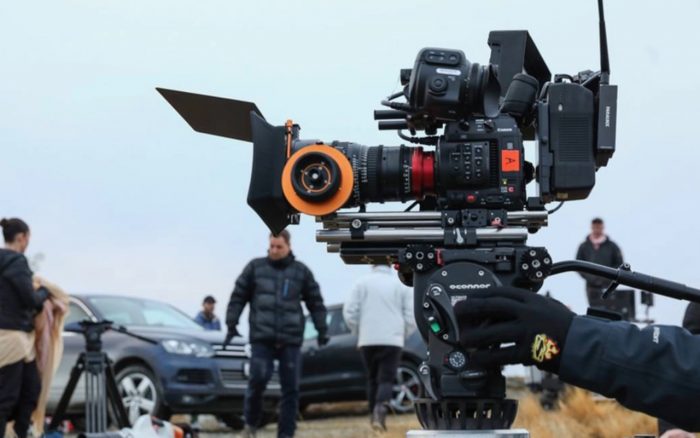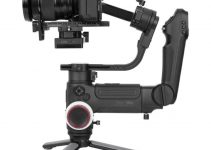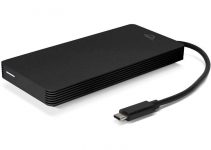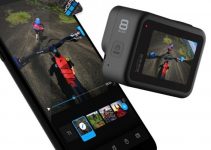The mighty Canon C200 may not be everyone’s cup of tea, but that little Canon can sure delivery some smashing footage. Having the unique to the Cinema EOS lineup (so far) feature to record internal 4K Cinema RAW Light and small form makes it an ideal tool in situations where the production schedule requires high-quality images in a limited shooting time, the C200 recently was used to shoot a posh Jaguar F-PACE SUV commercial.
The advert commissioned by Jaguar’s agency Spark44, and shot by Director Brett Danton and DoP Ashleigh Carter, who also took a couple of Canon C700‘s just in case. According to Canon, the crew filmed almost entirely on a pair of pre-production EOS C200 cameras and a range of Canon Cine primes and zooms, the shoot saw the team travelling 500 miles across New Zealand’s South Island in order to capture footage at a huge variety of locations.
According to Director Brett Danton:
“The camera turned up the day before the shoot. We had two EOS C200s, one rigged for shoulder use while the other one was set up in a gimbal, primarily for drone work (although it could quickly go onto a handheld gimbal if it needed to).
“We also had two C700s. When I initially looked through the storyboards I thought we’d end up using both the C200 and C700 cameras. But to be honest, that final 60-second commercial features just one C700 shot. What we did do was a lot of comparison edits, because I think the C200 and C700 mix together so well – it’s the perfect combination of cameras.”
The crew had to overcome harsh weather and challenging lighting condition in addition to the “rarely friendly” terrain in order to complete the shoot, where they appreciated the Canon C200’s compact from factor that lend itself easily to swap between sticks and a shoulder mount setup. Despite having access to C700’s, for obvious reasons they used the C200 for the drone shots, which were done thanks to the Freefly Systems’ ALTA 8 drone.
Check out the behind the scene video and see how they shot the Jaguar F-PACE commercial.
Canon C200 Features/Highlights
- 4K DCI Cinema RAW Light to CFast 2.0
- 4K/60p – 10 bit
- 4K/30p – 12 bit
- Internal Compressed Codec options:
- 4K/60p Long GOP 8bit 4:2:0 at 150 Mbps in MP4
- 4K/24/25/30p Long GOP 8bit 4:2:0 at 100 Mbps
- 2K/HD at 35 Mbps 8bit 4:2:0 in MP4
- Full HD 120fps Continuous with no sensor crop
- Records onto SD cards
- Can do 2K/Full HD Proxies on SD card and Raw on Cfast 2.0
- Up to 15-stops dynamic range (Cinema RAW Light)
- Wide DR, Canon LOG & Canon LOG 3
- Dual Pixel CMOS AF with touch control and extensive shooting functions
- Built-in NDs – 2/4/6/8/10 stops (like on the C300 MK II)
- ACES 1.0 Support
- BT.2100 (PQ) HDR support
- HDR ST-2084 LUT (in EVF)
- Uses BP-A30 and BP-A60 batteries (same as C300 MK II)
- 8bit 4:2:2 XF-AVC 4K internal codec coming Q1 2018 as free firmware
- No 4K Raw Output (has to be recorded internally)
- HDMI Output:
- 1920 x 1080p – 10bit 4:2:2
- 3840 x 2160 – 8bit 4:2:2
- SDI Output:
- 2048 x 1080 / 1920 x 1080 – 10bit 4:2:2 – Raw Light
- 1920 x 1080 – 10bit 4:2:2
- Price: $7,499 (B&H, Adorama)

Image by Canon
Thanks to the new 4K RAW format that was introduced with the Canon C200 – Cinema RAW Light, the raw files are approximately 1/3 to 1/5 the size of a full-fat Cinema RAW file produced by the likes of the C700, but maintains plenty of editing headroom.
“With the C700 there’s so much RAW data – if you’re doing a lot of green screen or comp work, this is what you need,” explains Brett. “But in terms of the image quality from the C200 and Camera RAW Light? I think what’s shown in the finished commercial speaks for itself.
“We shot 4K Cinema RAW Light internally to CFast 2.0 on the C200, with 2K MP4 recorded to SD as proxy media. The SD cards lasted for a long time so we didn’t really worry about them. For CFast 2.0, we had 4 x 128GB cards, each of which would give us around 16 minutes of 12-bit 4K at 25fps. For backing up, we used a G-Tech RAID that had a CFast card reader built in. It only took around four minutes to copy a card, so we never had to deal with a backlog of data. The files were duplicated onto other drives, which we held onto until arriving back into the UK, where they were copied onto the post house servers.
“On location, we started to edit the MP4 proxies in Premiere, reconforming the edit to RAW at a later date. DaVinci Resolve 14 was used to output the Cinema RAW Light to 16-bit DPX, followed by colour grading in Baselight and finishing in Flame.”
To read the full interview and learn more about the C200 head over to Canon’s website here.
Disclaimer: As an Amazon Associate partner and participant in B&H and Adorama Affiliate programmes, we earn a small comission from each purchase made through the affiliate links listed above at no additional cost to you.




